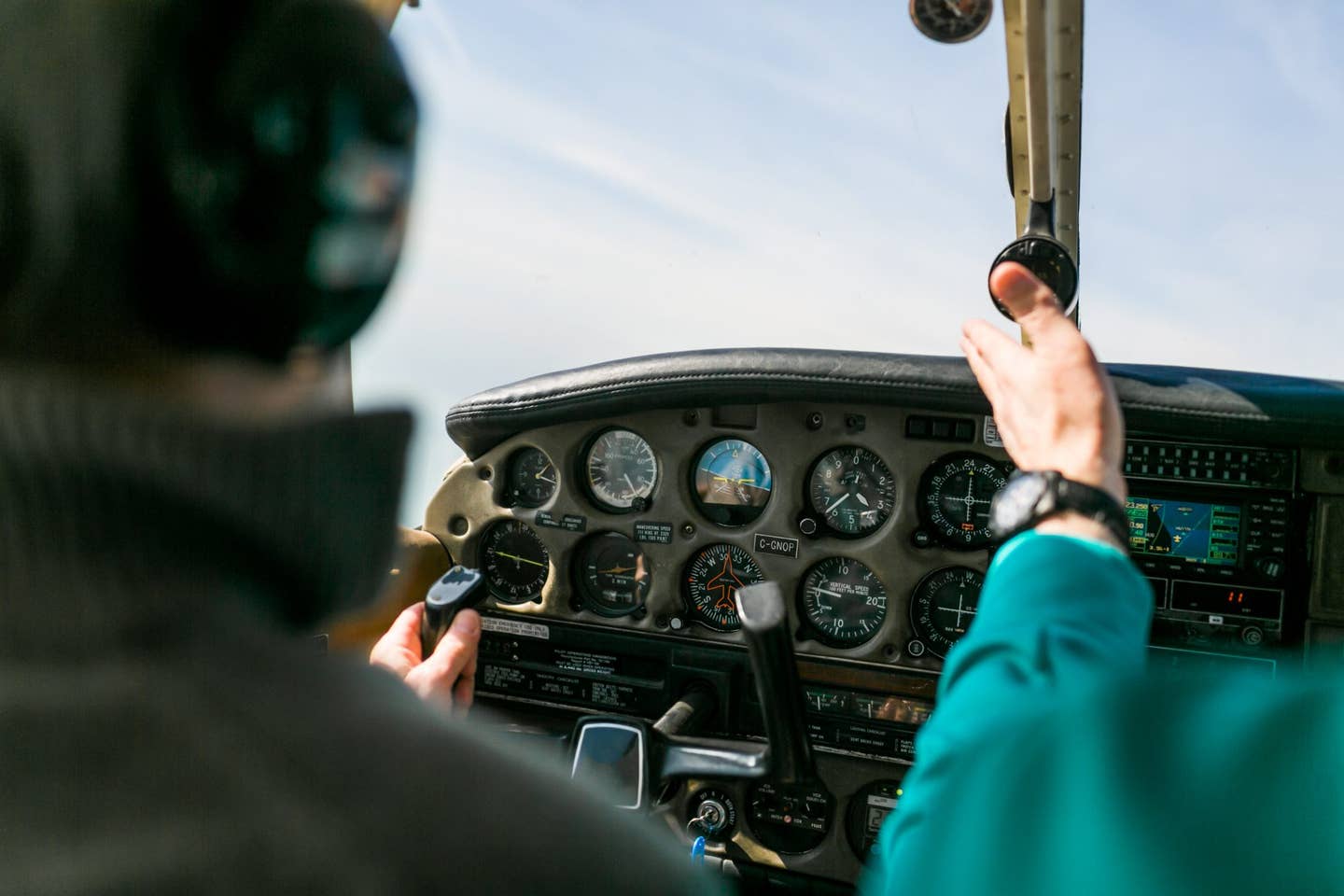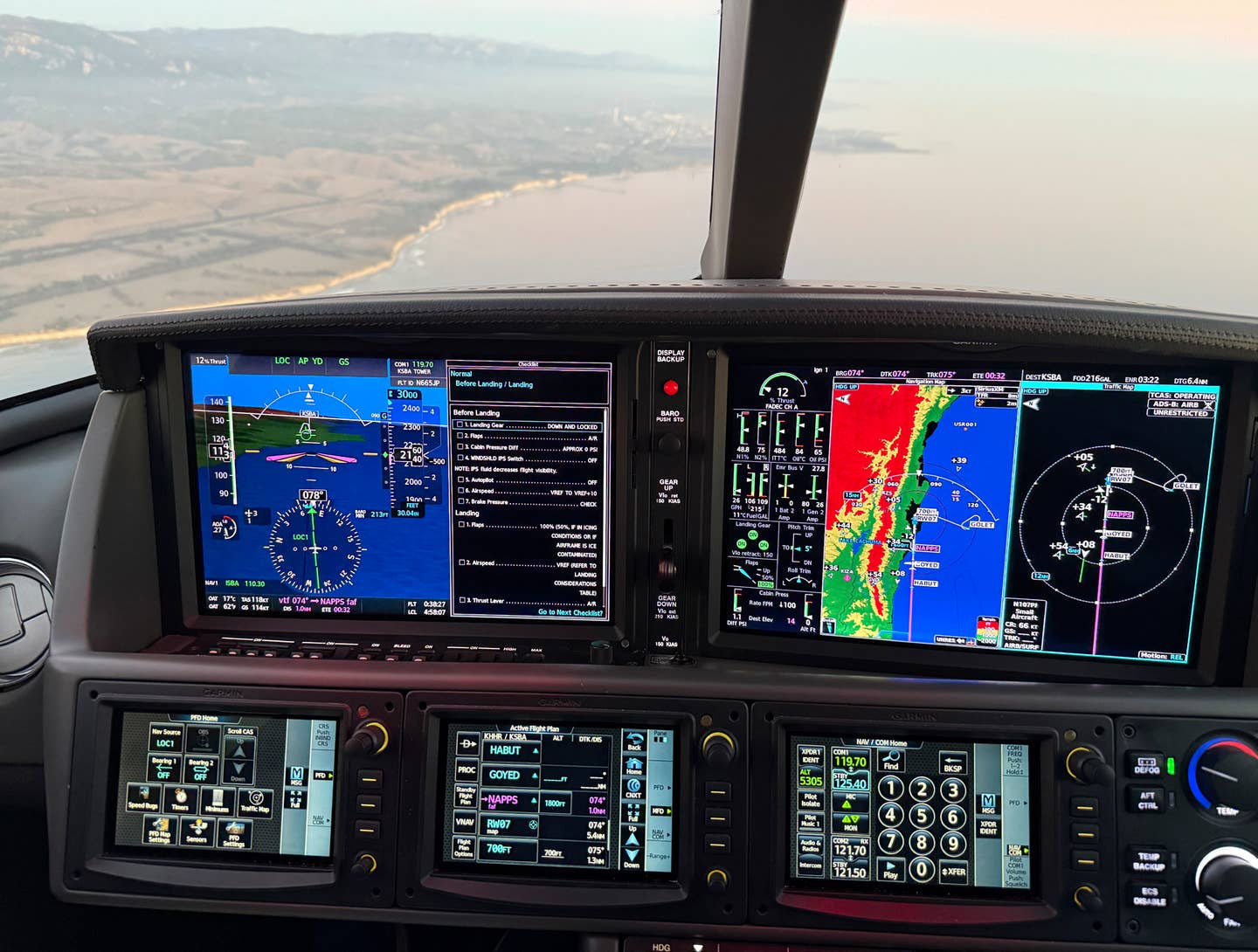Zen and the Art of Airplane Operation
Flying—becoming one with the craft—must be experienced to truly understand its addictive nature.

Without evidence, I believe that flight has fascinated humans since we first left the trees. [Credit: Adobe Stock]
I never understood aviation until the day I lost it.
In the span of two weeks, I failed a flight physical with my increasingly weakened eyesight and found a tumor that was removed the following day. In that moment, as I lay on my bed pondering the potential loss of my entire professional life up to that point, it wasn’t the loss of money or experience or the prospect of entering the shrinking job market with little useful experience that truly scared me. What scared me was an existential loss—a loss of an experience. I flew again as a passenger before I fully understood my condition, and staring at the clouds out the Boeing 757 window, I came to a realization that I am only capable of in my most introspective moments: Aviation is not rational. Flight cannot be depicted through an analytical description of the scientific principles discovered by Isaac Newton and Daniel Bernoulli and pioneered by Orville and Wilbur Wright. It cannot even be put down to psychological explanations of a desire to be “above,” or the process of technological advancement.
Without evidence, I believe that flight has fascinated humans since we first left the trees. We have always stared at the birds, longing to join them in the lofty space that, until the last century, belonged to them exclusively. Aviation is a romantic field, populated by romantic minds with a classical bent. Beings that can sit and break down every aspect of the technological wonder that is their mount and spout off the four forces or the hazards of a thunderstorm with ease. But when caught staring at a cloud or asked what makes the tires “squeak” on the runway in an excellent landing, their romanticism comes to the fore.
A good pilot will tell you the procedure. They will know the boldface by heart, the correct method for intercepting a holding pattern. They will complete the emergency checklists diligently and speedily, without missing a step. They will debrief their learners on shoddy techniques and share their ideas for fixing mistakes. A good pilot puts the airplane where it needs to be.
The great pilot knows the reason behind the checklists, techniques, and procedures.
The great pilot flies with an understanding of the aircraft in relation to themself, how they fit into the system that is the aircraft and crew. The learning pilot thinks about the techniques they have been taught, studies the procedures, and memorizes the checklist. They have their own techniques and use the checklist to confirm what they already know—that the system is working together well. Or confirming they missed something, tracking down the elusive feeling of incompleteness, where only the checklist can show your own idiocy.
The great pilot is making decisions throughout every maneuver, between lines of approach, power settings, or precise angles. They always start with known settings and adjust, the same as a student, but the process happens quickly enough to allow for experimentation and constant minor changes that attempt to optimize everything the plane is doing. The great pilot merges with the airplane, and together the single organism finds a way to the destination.
The great instructor will show their learners the joy of flying. They will talk the whole time, telling the until recently landlocked soul the correct pitch and power setting or the right angle of bank to complete the turn in time. They will do it all correctly, and it will look effortless. It will seem as though the airplane is doing what they ask without being told. As a learner, my only thought was, “Why isn’t it that easy when I have the controls?” As an instructor, I realized it was.
I have always maintained that I could teach a monkey to fly. Being a pilot is easy. Pull back, little trees; push forward, big trees. Set the right pitch, power, and bank angle.
Being an aviator, however, you have to experience for yourself. There’s something about flying that can’t be taught. It can only be learned, alone among the clouds. A fascination with the wind, a hunt for more groundspeed. A friendly negotiation with the controller for a straighter line toward the destination or a shorter pattern to the initial approach fix. But one thing above all: self-reliance.
Pilots are typically pictured as the height of arrogance. Zipper-suited sun gods, looking down on everyone, constantly sneering at danger and anyone who tells them no. In my firm opinion, this is not a fair stereotype. Confidence in your skills and belief in yourself are requirements to truly be a great pilot.
To be reliable to yourself, you have to believe, not just that you can do it, but that you are one of the best. When I face that mountain strip or stormy day, I have supreme confidence in my ability to overcome, because if I don’t, the airplane will kill me. One moment of doubt, one look back over my shoulder, and the mountain rears up in the windscreen, the dark rain cloud in the distance swallows me whole.
Yet pilots are also the humblest people out there. Every aviator has read a safety investigation and said, “There but for the grace of the flying gods…” We are the first to admit our mistakes in the debrief, the first to tell a student about the time we messed that up too. Our confidence comes in the moment, approaching every situation with cool, calm, collected self-confidence. I have screwed up before, and I will again, but not this time. This time, I’ll be perfect. Just like I (almost) always am. The attitude isn’t an accessory. It’s a necessity.
Aviation teaches us about the system we are all a part of. My mind, connected to the machine through handles, wires, and pushrods, fits in as a part of the larger whole. Together, I and the craft soaring through the air create a painting, a masterpiece of impressionist beauty. The winds may be against me, Mother Nature may roar to take me into her fold, but my airplane and I will always slip the surly bonds, accomplish our mission, and return braver and wiser. I am not a part of the machine. I am the machine. My brain reaches out tendrils to every part of my craft, guiding me through the updrafts and downdrafts, all to fit into my piece of the picture created by the aviation enterprise, to accomplish my specified goal, even if that is simply to enjoy.
I am an integral part of a network. People, airplanes, radio waves, and weather patterns all flow together like the colors in Vincent Van Gogh’s Starry Night. I make up a critical piece of the painting. The mission brief, the study of the destination and terrain, the preflight, the takeoff, the descent, the debrief, lunch at the airport, the flight home. It is all necessary for the picture to make sense and for the colors to come together. My $100 hamburger is the key.
Or is it an addiction? Is my raving just an outgrowth of my withdrawal, my fear of never getting my fix again? Maybe the romance of aviation is just a cover for a bunch of guys and gals to go out and have their fun, prancing above the average bird.
The effortless glide of a perfect liftoff opens up the heart. The view of a cloud from above, the perfectly executed holding entry, the hurtling (but completely controlled) descent 5 knots below max speed—all of it speaks to a beauty only experience can comprehend. The air-minded person sees flying as necessary for life. They enjoy every moment they’re in the air. They spend irrational amounts of time and money to be there. And they wouldn’t have it any other way.
Editor’s Note: This article, written by Doug Bowyer, first appeared on Plane & Pilot.

Sign-up for newsletters & special offers!
Get the latest FLYING stories & special offers delivered directly to your inbox






